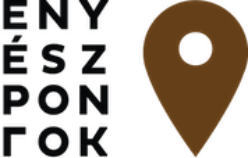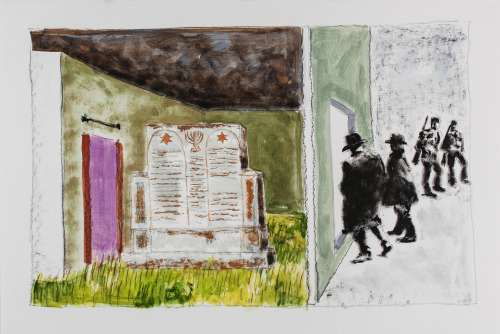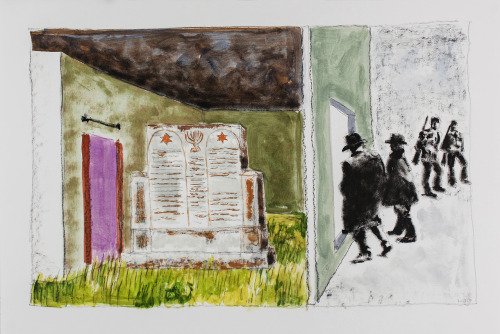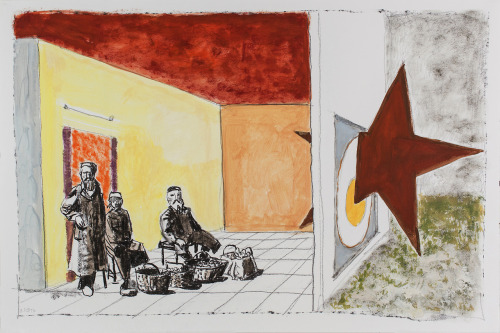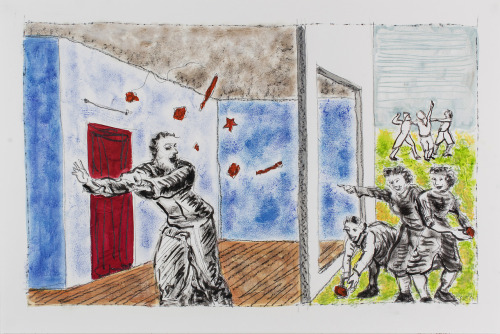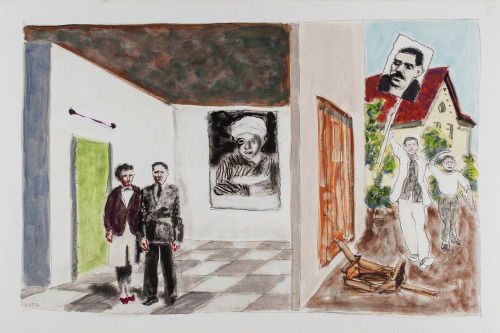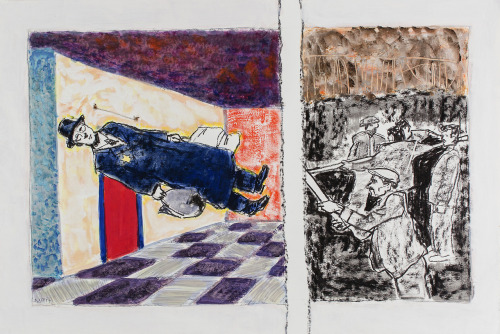2017, 9 db 43,5x65cm, vegyes technika, papír / 2017, 9 pcs, 43.5 x 65 cm, mixed media, paper
Elolvasván a vidéki Magyarországon történt 1945 utáni antiszemita pogromok és lincselések leírásait, szembeötlő volt számomra, mennyire nem húzható éles határvonal a háború előtti és utáni események között. Miért is hinnénk azt, hogy a náci rezsim bukása után egy csapásra megszűntek az előítéletek és a hisztérikus gyűlölet. A kiépülő új rendszer labilisnak mondható, nincs még kialakult stabil értékrendszere. Az emberekben élő újrakezdés utáni vágy szorongással és elfojtással vegyített. Elég egy szikra, hogy az érzelmek újra lángba borítsanak mindent.
A kunmadarasi pogrom története rendkívül összetett és szerteágazó. Elmebajos, abszurd vádak tüzelik fel a sokat nélkülözött, elcsigázott helyi lakosságot, akik legrosszabb emberi ösztöneikre hallgatva, és a beléjük nevelt előítéleteknek engedelmeskedve támadnak ártatlan társaikra. Józan ésszel szinte felfoghatatlan az események egymást gerjesztő mivolta.
Az általam készített rajzsorozat, Paolo Uccello – egy ugyancsak végletekig abszurd antiszemita történetet feldolgozó – festményének (Breaking Down the Jew’s Door) újraértelmezése. Műveim a képi és téri struktúra megtartása mellett különböző művészettörténeti, történeti referenciákat, illetve a kunmadarasi eseményekre tett utalásokat is tartalmaznak. Ilyen motívumok a tojás, a vörös csillag, a piaci árusok, az egyik felbujtó portréja, az állomáson veszteglő tehervagon, Kunmadaras főtere egy első világháborús emlékművel, vagy Kitaj és Malevics festményeinek elemei. A rajzok vegyes technikával készültek (ceruza, szén és olajfesték használatával).
/ After reading descriptions of anti-Semitic pogroms and lynches that had taken place in the Hungarian countryside, I realized that there is no clear boundary between pre- and postwar events. Indeed, why believe that prejudice and hysterical anger suddenly dispersed after the fall of the Nazi regime? The forming, new political system is rather unstable, lacking a solid set of values. People’s longing for a new start is permeated with anxiety and repression. Emotions need a mere spark to set everything ablaze once again.
The story of the Kunmadaras pogrom is particularly complex and diversified. Locals—destitute and worn—are provoked with mad, absurd accusations, and follow their worst human instincts and inherited prejudices when they attack their innocent fellows. It’s almost impossible to grasp the way events triggered one another.
Paraphrasing Paolo Uccello’s Breaking Down the Jew’s Door, a painterly adaptation of another utterly absurd anti-Semitic story, I made a series of drawings. These images stick to the original’s visual and spatial structure, yet they are completed with different history and the art history references, also recalling the Kunmadaras events. This is done through motives like the egg, the red star, the merchants, the portrait of one of the agitators, the goods wagon at stand at the station, the main square of Kunmadaras with its WW1 memorial, or the details from paintings by Kitaj and Malevich. The drawings use mixed media (pencil, charcoal, and oil).
